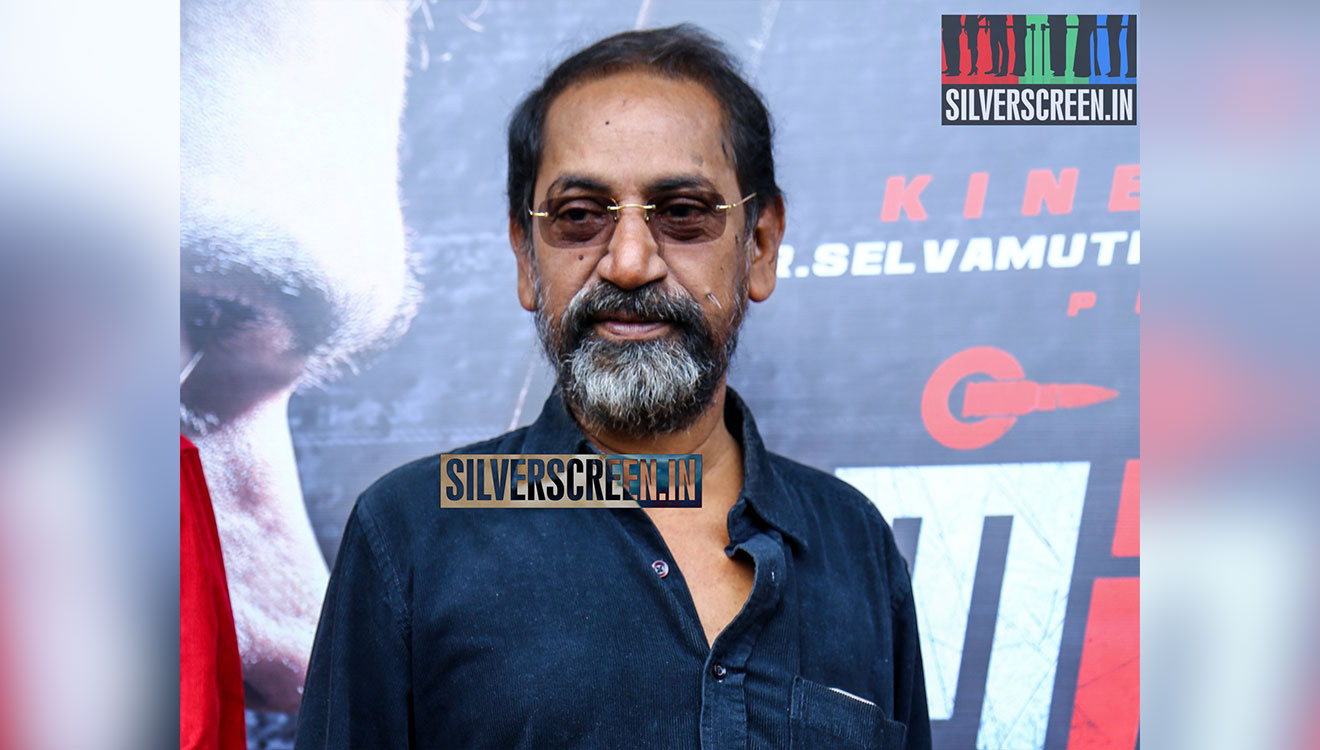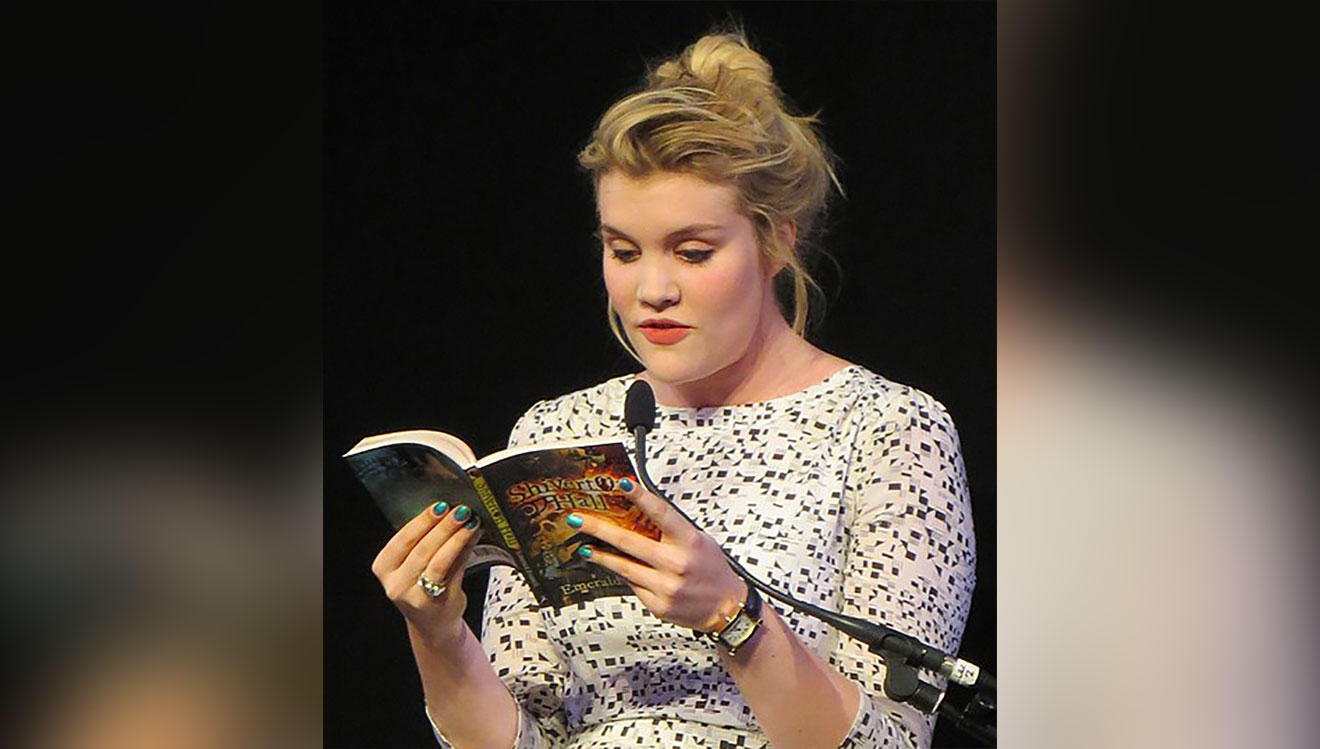The Ministry of Electronics and Information Technology (MEITy) and the Ministry of Information and Broadcasting (I&B) announced the Information Technology (Intermediary Guidelines and Digital Media Ethics Code) Rules 2021 on February 25 directed towards regulating content of social media and OTT platforms.
While the draft policy released on February 24 focused on proposing the setting up of a three-tier regulatory system, the press release emphasises on social media. OTT and digital news media are to be put under self-regulation and social media, under proper check to prevent the spread of fake news.
After elaborate consultations with the public and themselves, the rules are to follow a “soft-touch oversight mechanism” as also mentioned by Union Minister of Information Technology and Communications Ravi Shankar Prasad during a press conference on Thursday. Justifying the regulation, he said, “The Supreme Court has ordered that internet is not a fundamental right by itself. But the fundamental right of freedom of speech and expression under 19(1) can use internet to assert that right.”
“So, if it is a fundamental right under 19(1), it is subject to 19(2) of the Constitution, which is, reasonable restrictions can be imposed in pursuit of safety, security, sovereignty of India, public order, etc,” he said.
He said that the same treatment will be meted out irrespective of political affiliation. He also referred to the Republic Day incident of farmers storming the Red Fort at New Delhi and hoisting the farmers’ union flag on the mast where the Indian flag is hoisted, and said that such things shall not be supported on social media. Twitter was sent a notice by the government after it defied the government’s order regarding blocking several accounts that have been actively posting updates on the ongoing farmers’ protest.
MEITy’s guidelines for social media
Over the years, the increasing instances of misuse of social media, to share fake news and threaten the dignity of women by sharing morphed images, has resulted in the government ordering the rules. Further, lack of transparency and absence of robust grievance redressal mechanism have left the users totally dependent on the whims and fancies of social media platforms. The major social media platforms have the following user base, namely, 53 crore users on WhatsApp, 44.8 crore on YouTube, 41 crore on Facebook, 21 crore on Instagram, and 1.75 crore on Twitter.
Due to this magnanimity in numbers, the guidelines states that while social media companies are allowed to do business in India and earn profits, they have to take responsibility for their actions, and should establish a “robust grievance redressal mechanism” that will “empower” the users and the social media intermediaries.
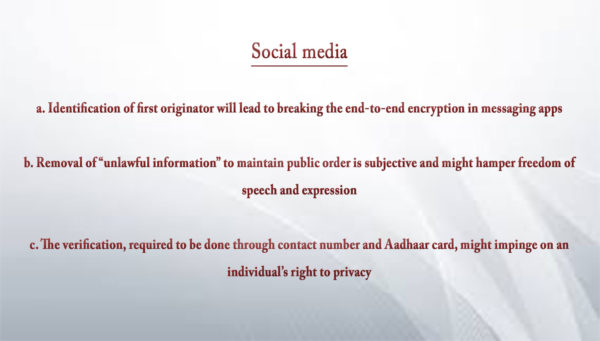
Photo Credit: Silverscreen
1 (1) (1) (1)The intermediaries shall appoint a grievance officer to deal with complaints and resolve them within 15 days from its receipt. While intermediaries must remove or disable access within 24 hours to sensitive content attacking a person’s modesty, significant social media intermediaries, or with registered user base of 50 lakh or above, such as Twitter, that disable access of users to any information, must provide the user with a notice explaining the grounds for the same.
The significant social media intermediaries must also employ a chief compliance officer responsible for releasing a monthly compliance report, a nodal contact person, and a resident grievance officer, both residents of India, to ensure diligence.
Seeking “least intervention from the government’s side” as said by Prasad, the rules hold social media accountable for any act and thus, provide for a “voluntary” verification of account of users. The “visible mark of verification” in order to tackle the creation of fake accounts on social media, will entail the user to register using their registered mobile number, Aadhaar card, among others.
Prasad said, “We would like, and expect, this verification to be done, so as to locate a tweet, whether from India, Pakistan, or some other foreign country.” This mechanism replicates the Know Your Customer (KYC) system that was introduced as a voluntary requirement for users availing online services or engaging in financial transactions. Currently, all digital financial service providers require a KYC through linking the users’ accounts to their Aadhaar Unique Identification Number.
Digital media and OTT platforms
The Ethics Code relating to digital media and OTT platforms was devised by the I&B Ministry and follow a “self-regulatory mechanism”. I&B Minister Prakash Javadekar announced these codes and stated that “every freedom must be responsible freedom”.
OTT and digital news media platforms will have to “disclose their activities, from where they are publishing, how they publish, how much they are publishing, anything”.
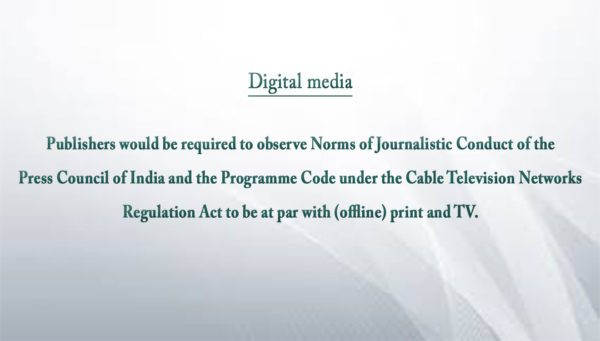
Photo Source: Silverscreen India Media Library
1 (3) (1) (1)The grievance redressal system will be the same as the social media platforms.
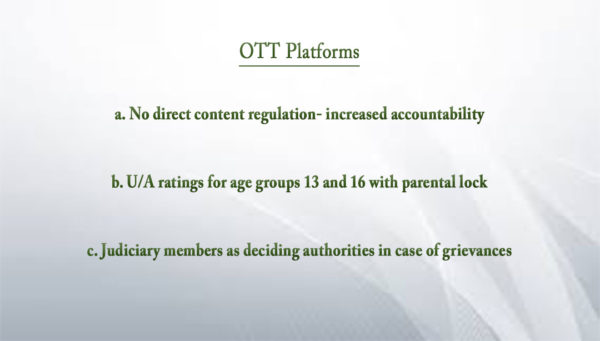
1 (2) (1) (1)
The self-regulation of OTT and social media platforms shall be carried out by the self-regulatory bodies that might comprise a retired judge of the Supreme Court, a High Court or independent eminent person. According to Javadekar, this is “to provide a level playing field” between print, television and digital media
A three-level grievance redressal mechanism must be established for proper self-regulation: self-regulation by publishers by appointing a Grievence Redressal Officer who shall act on every grievance within 15 days. The I&B Ministry shall formulate a charter and a Code of Practices to oversee the functioning of the regulatory bodies. The intervention by oversight mechanism only if the first two collapse.
These guidelines are to be adopted by platforms like Netflix, Disney+ Hotstar, Amazon Prime Video and 14 others, and is a part of an attempt to bring the streaming platforms under the purview of the Centre.
Recommended
They were brought to function after a spate of complaints against digital content like Tandav, Mirzapur, Sacred Games and others came under fire from certain groups and advocates of the right-wing for hurting religious sentiments, showing the women in bad light, thereby, tarnishing the image of a place, and promoting violence and usage of abusive language.
However, the guidelines are not directly aimed at regulating content, rather emphasise on a redressal mechanism with members of government agencies sitting in the upper echelons of decision-making.

